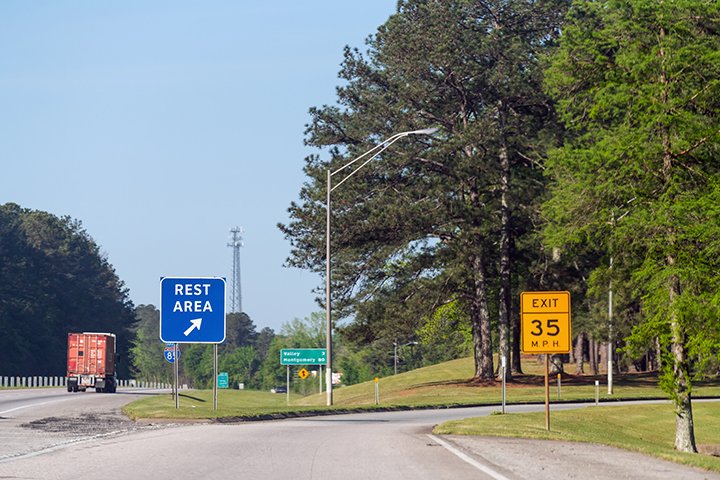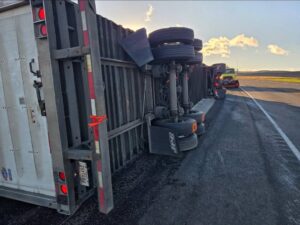WASHINGTON — With the Federal Motor Carrier Safety Administration’s (FMCSA) new hours-of-safety service rules poised to go into effect Sept. 29, a coalition of three safety groups, along with the International Brotherhood of Teamsters, are asking a federal court to overturn the new regulations.
The Public Citizen Litigation Group, which is representing Advocates for Highway and Auto Safety, Citizens for Reliable and Safe Highways (CRASH), Parents Against Tired Truckers (PATT) and the International Brotherhood of Teamsters, on Wednesday, Sept. 16, filed a petition with the U.S. Court of Appeals for the District of Columbia Circuit that seeks to invalidate the new HOS rules. The petition alone will not prevent the new rules from going into effect as scheduled.
“The FMCSA is supposed to protect truck drivers and the public from unsafe driving conditions, but this rule does the opposite and puts the health and safety of these workers at risk,” said Adina Rosenbaum, a lawyer with the Public Citizen Litigation Group.
Under the new HOS rules, drivers could be on the road up to 77 hours in seven days, which is nearly double the average American’s 40-hour workweek, she noted, adding, “Driver fatigue and crash risk are directly impacted by these grueling schedules, and ultimately public safety suffers.”
FMCSA’s final HOS rules, which were finalized and published in the Federal Register June 1, 2020, make the following changes to current HOS regulations, according to the agency’s website:
- Expands the short-haul exception to 150 air-miles and allows a 14-hour work shift to take place;
- Expands the driving window during adverse driving conditions by up to an additional two hours;
- Requires a 30-minute break after eight hours of driving time (instead of on-duty time) and allows an on-duty/not driving period to qualify as the required break; and
- Modifies the sleeper berth exception to allow a driver to meet the 10-hour minimum off-duty requirement by spending at least seven, rather than at least eight hours of that period in the berth and a minimum off-duty period of at least two hours spent inside or outside the berth, provided the two periods total at least 10 hours, and that neither qualify period counts against the 14-hour driving window.
“FMCSA has bowed to special trucking industry interests at the expense of highway safety, seeking longer workdays for drivers who are already being pushed to the limit,” said James P. Hoffa, general president of the International Brotherhood of Teamsters.
Cathy Chase, president of Advocates for Highway and Auto Safety, describes trucking as “one of the most dangerous” jobs in the U.S.
“Taking away a 30-minute break to get a cup of coffee or stretch one’s legs makes no sense,” she said, adding that driver fatigue is a “known major contributor” to vehicle crashes.
“If I fall asleep on the job, my head hits the keyboard,” Chase noted. “If a truck driver falls asleep, his/her head hits the windshield.”
Proponents of the new HOS regulations say that providing flexibility for professional drivers will allow them to more easily complete deliveries on schedule and provide time for them to find safe locations in which to take mandated breaks.
“TCA strongly supports the premise of increased flexibility in the hours-of-service (HOS) regulations that will become effective on Sept. 29, based upon the very notion that the world of trucking has drastically changed since the current iteration of HOS rules were first introduced,” said David Heller, vice president of government affairs for the Truckload Carriers Association (TCA).
“Increasing flexibility to the professional truck driver’s day allows drivers the opportunity to find safe and adequate parking, avoid congestion on our highways and combat the daily battle of detention time, and the upcoming HOS changes aid in accomplishing exactly that,” he continued, adding that the data generated the use of electronic logging devices (ELDs) has provided valuable insights into the time constraints under which drivers must operate.
In a May statement responding to the development of FMCSA’s new HOS regulations, American Trucking Associations (ATA) also voiced support for the rules.
“No rule will satisfy everyone, even within our industry, but this one — crafted with a tremendous amount of input and data — is a good example of how by working with stakeholders on all sides, government can craft a rule that simultaneously benefits the industry, specifically drivers, and maintains highway safety,” said Randy Guillot, ATA chairman and president of Triple G Express Inc. in New Orleans.
Linda Garner-Bunch has been with The Trucker since 2020, picking up the reins as managing editor in 2022. Linda has nearly 40 years of experience in the publishing industry, covering topics from the trucking and automotive industry to employment, real estate, home decor, crafts, cooking, weddings, high school sports — you name it, she’s written about it. She is also an experienced photographer, designer and copy editor who has a heartfelt love for the trucking industry, from the driver’s seat to the C-suite.
















i for one am not comepletly satisfied with the new changes,but do have to say that fmcsa has finaly tried to give a little flex to the regs. there are so much tha could be done and still endorse safty,seems that every is looking for a one size fits all salution,(common since tells us that is not the anser)
been driveing for 50 yr. and seen many changes, soom good soom not so,i’m all for safety,but some decisions have to be made by the man/women behind the wheel.
enjoy the trucker news thanks
Everyone knows that the trucking industry is more safer today than ever. The most dangerous vehicle on the roads today are the cars. Just ride in a semi and see how theses cars run 10 plus mph over the speed limit and how dangerous they drive around trucks.